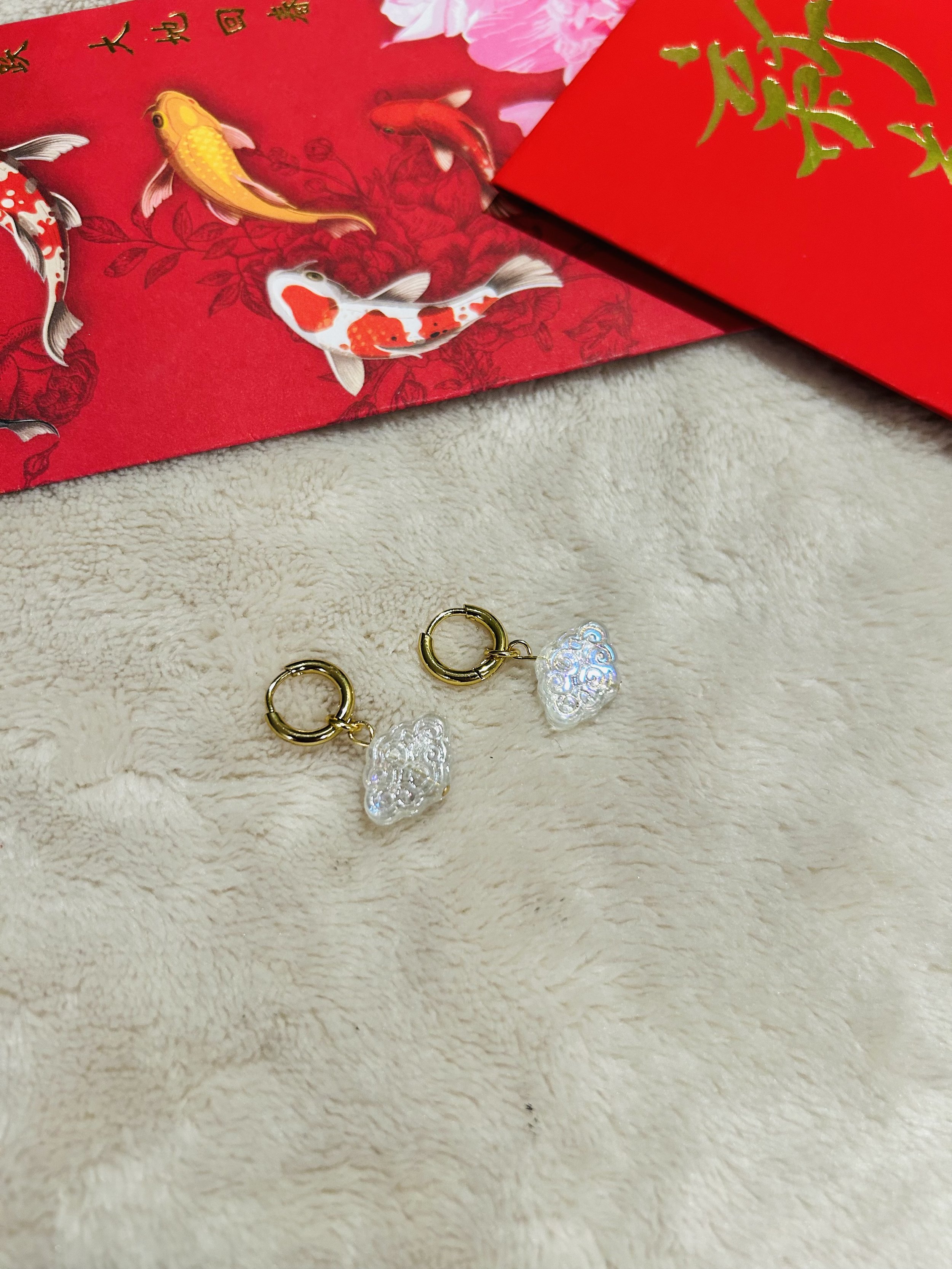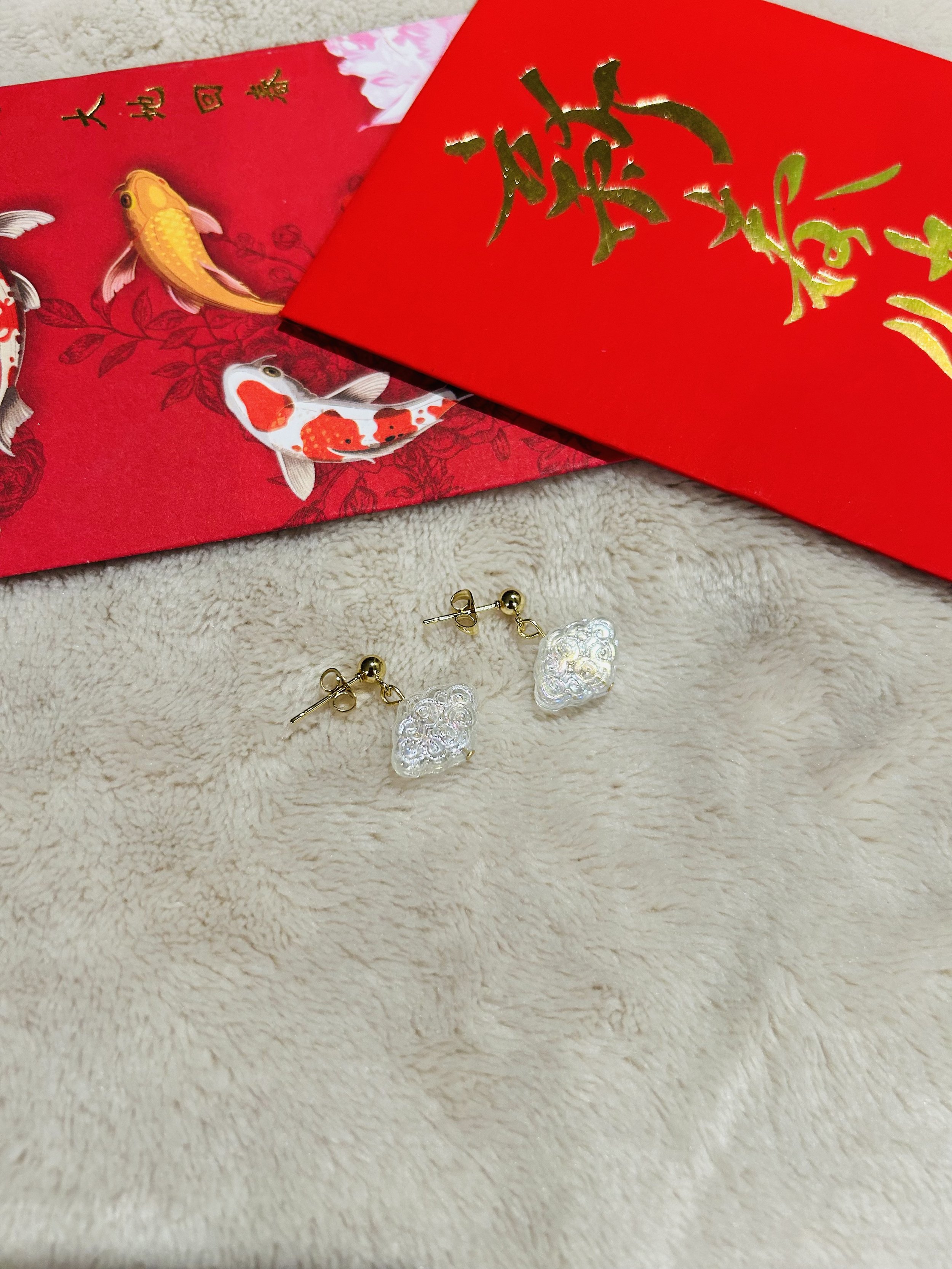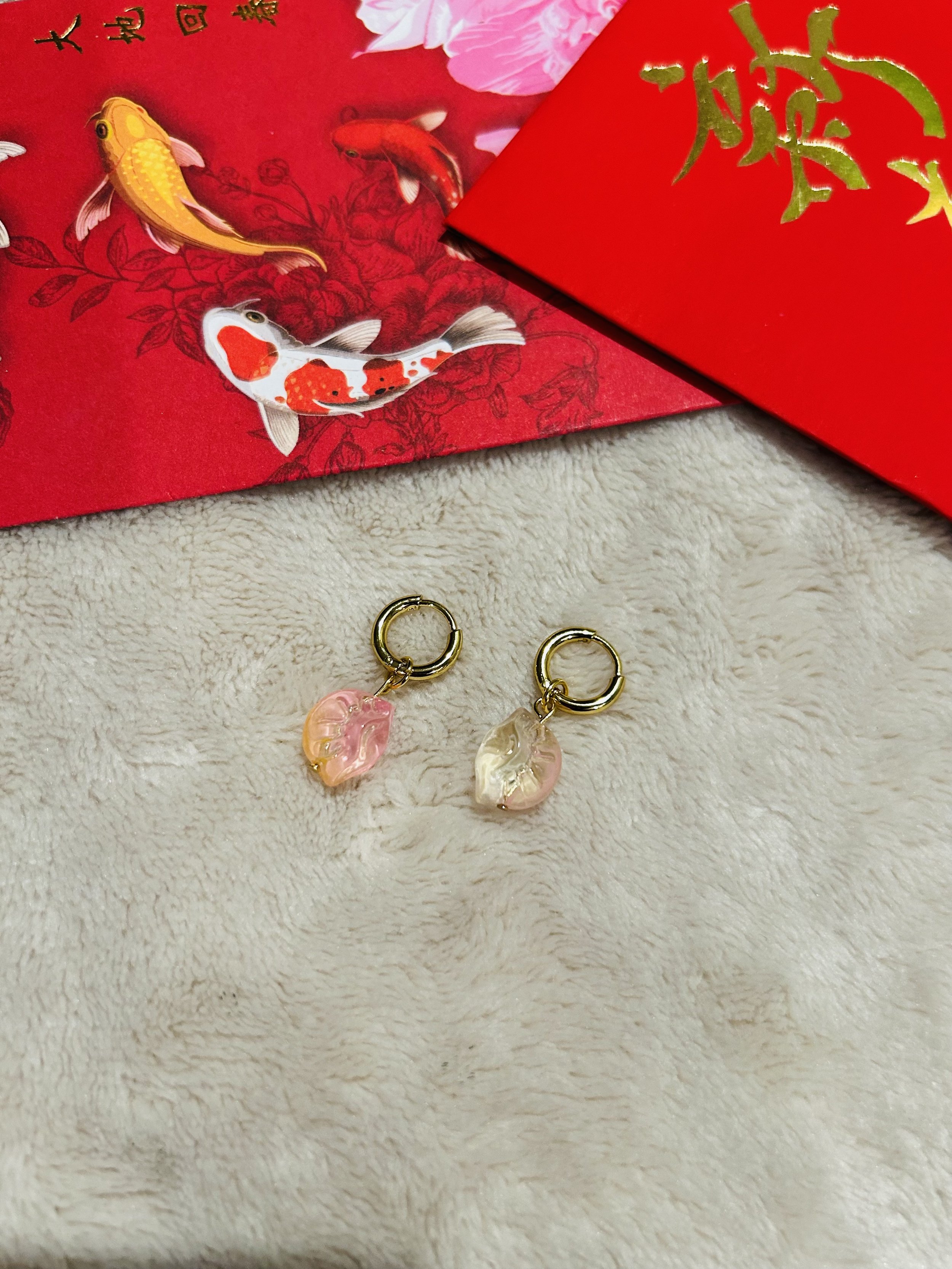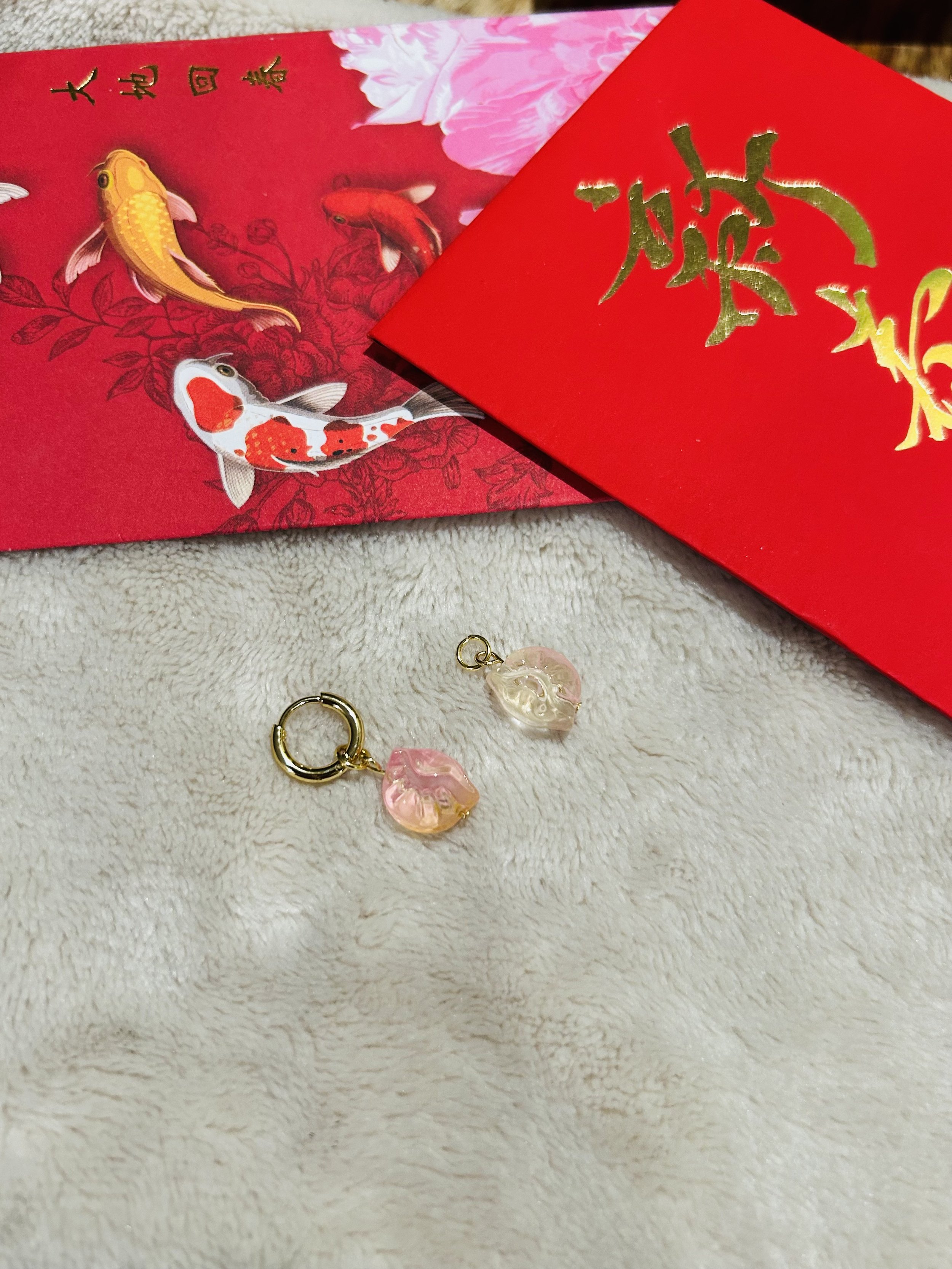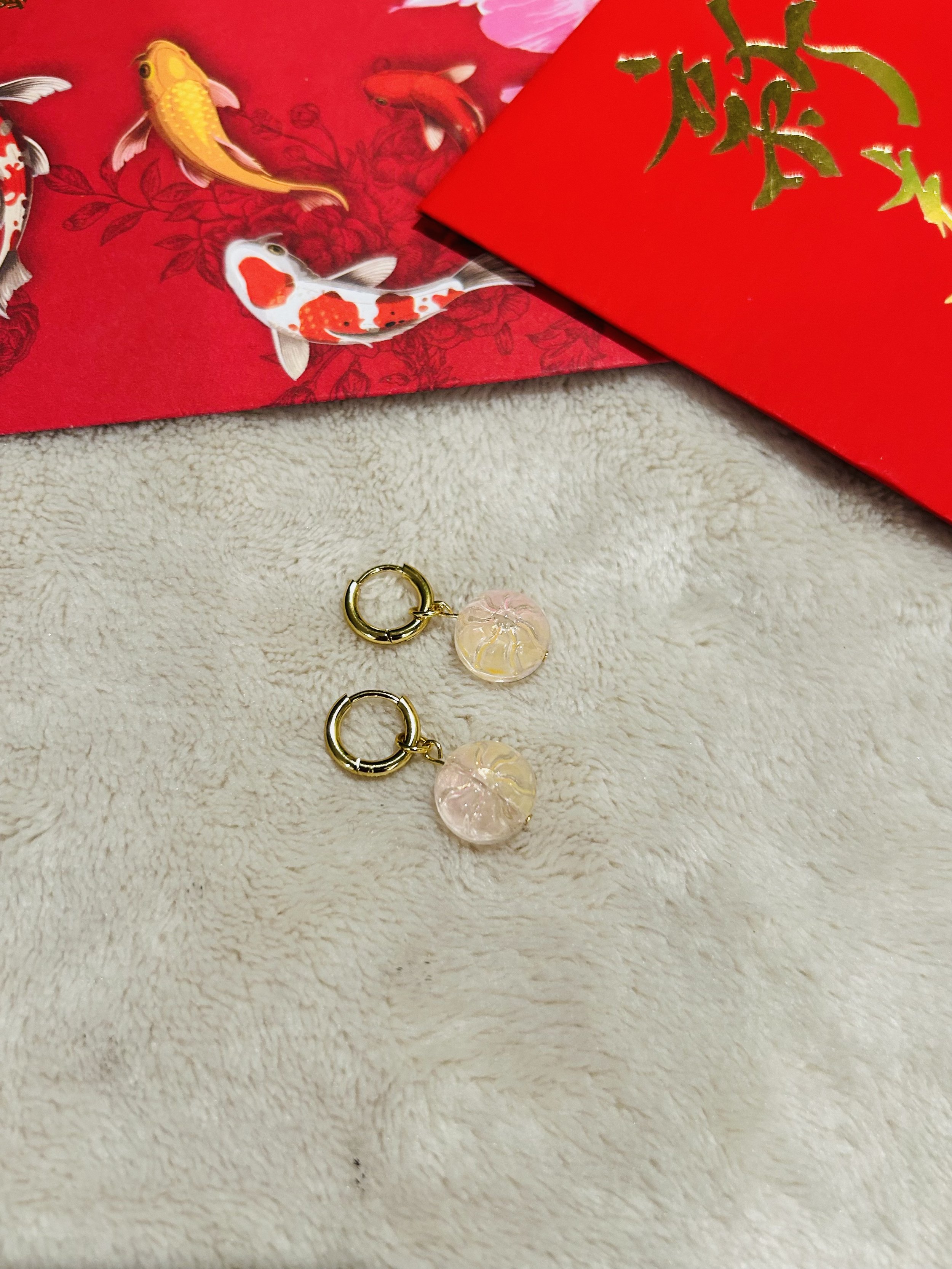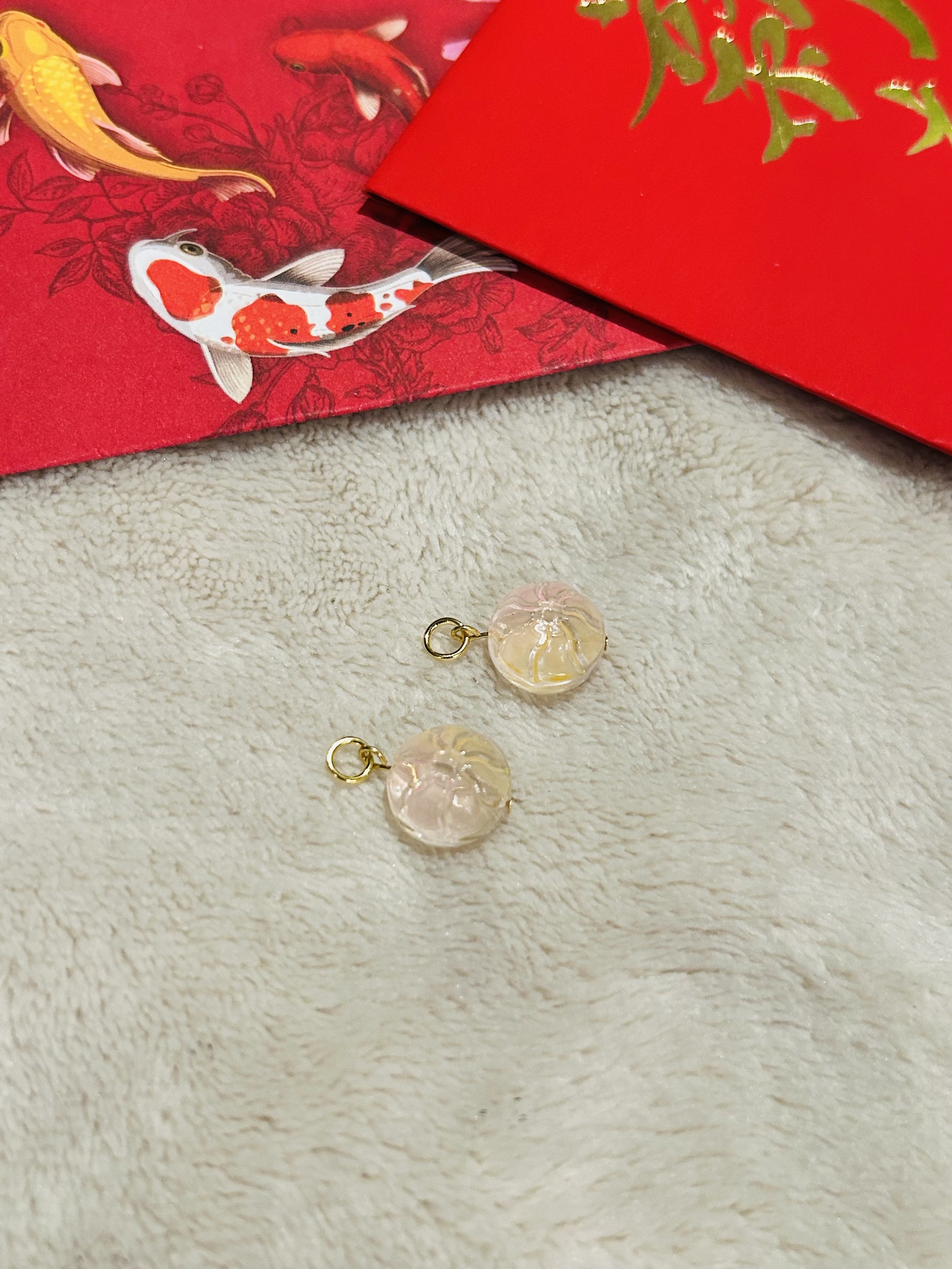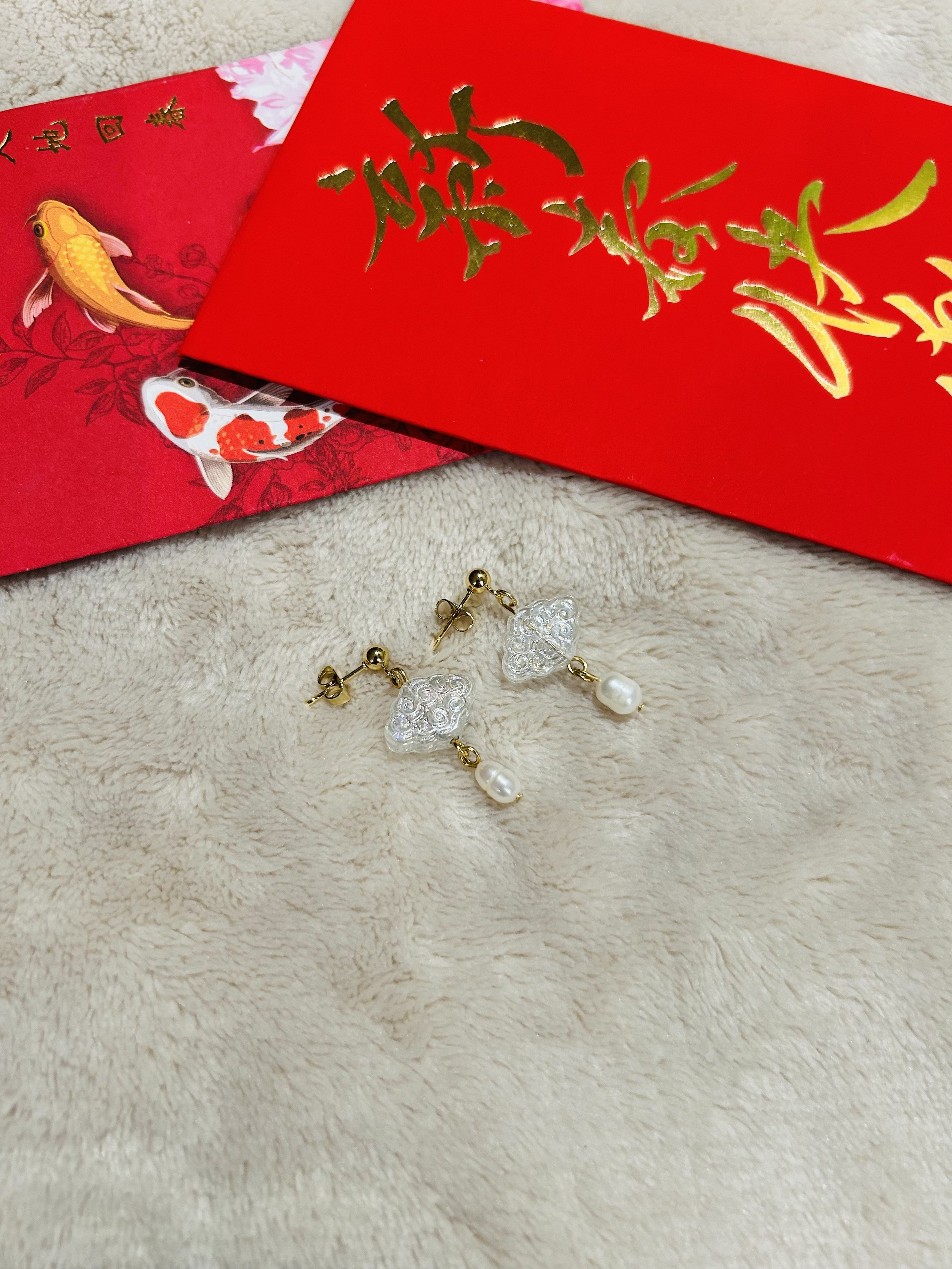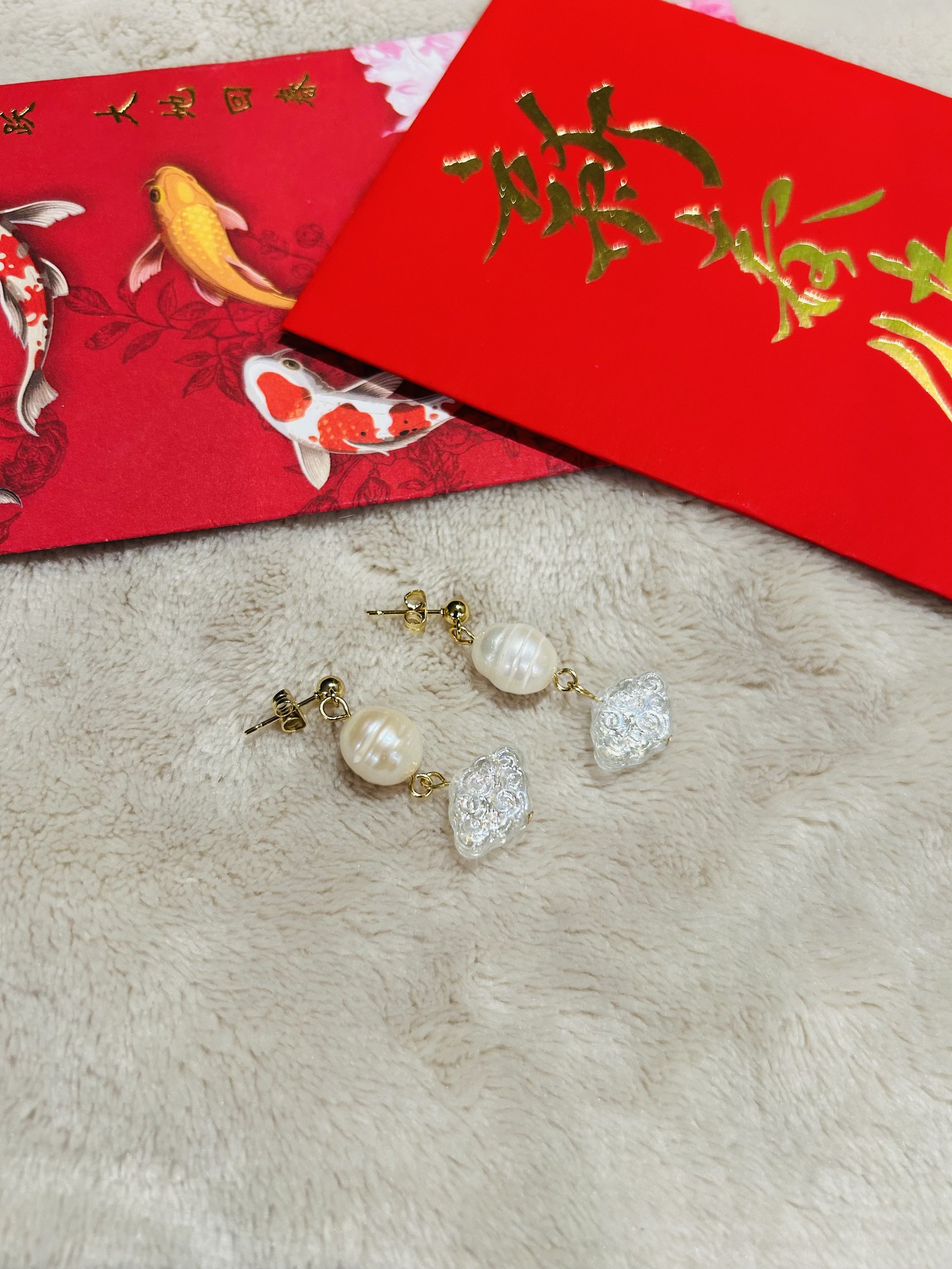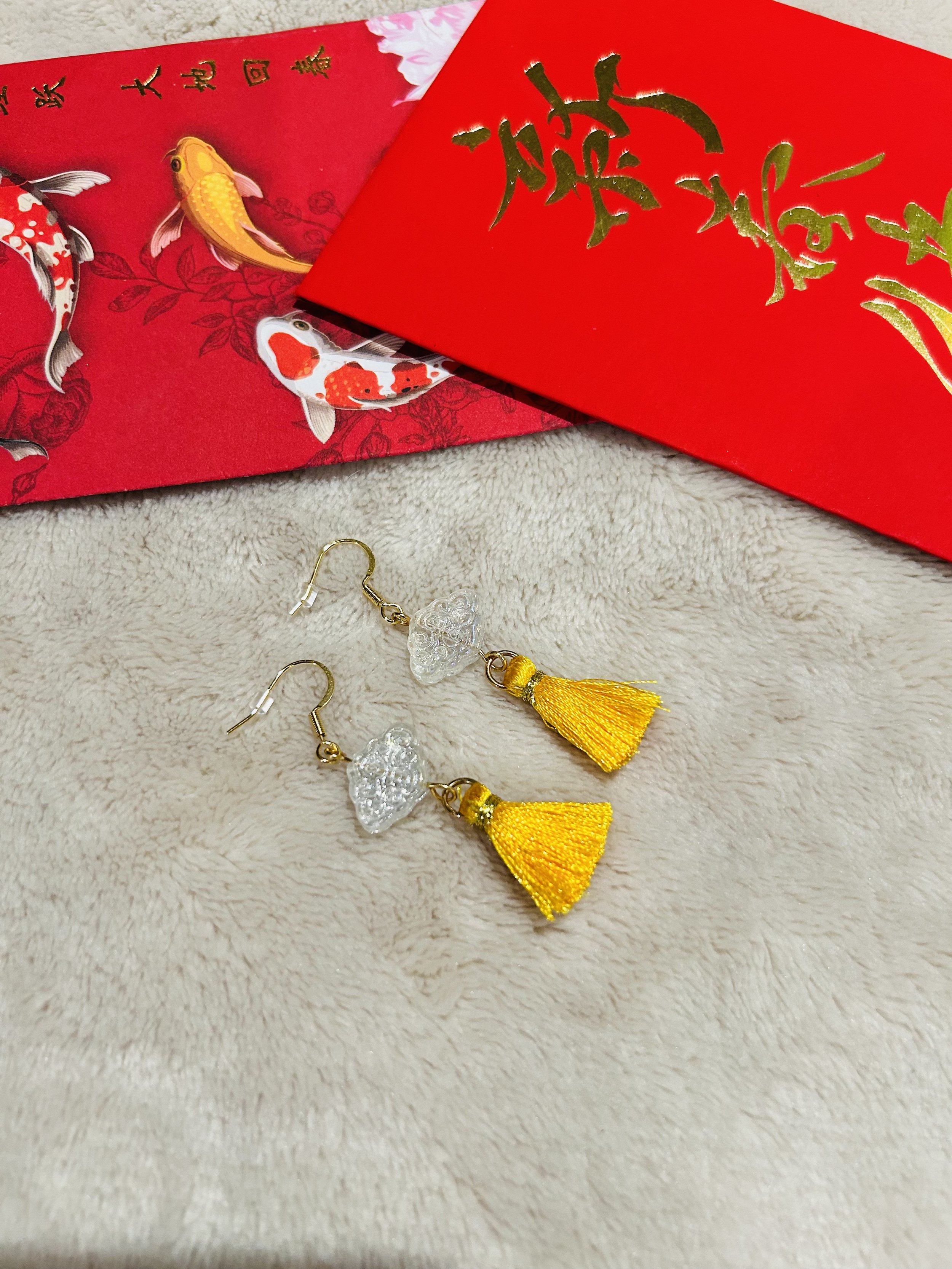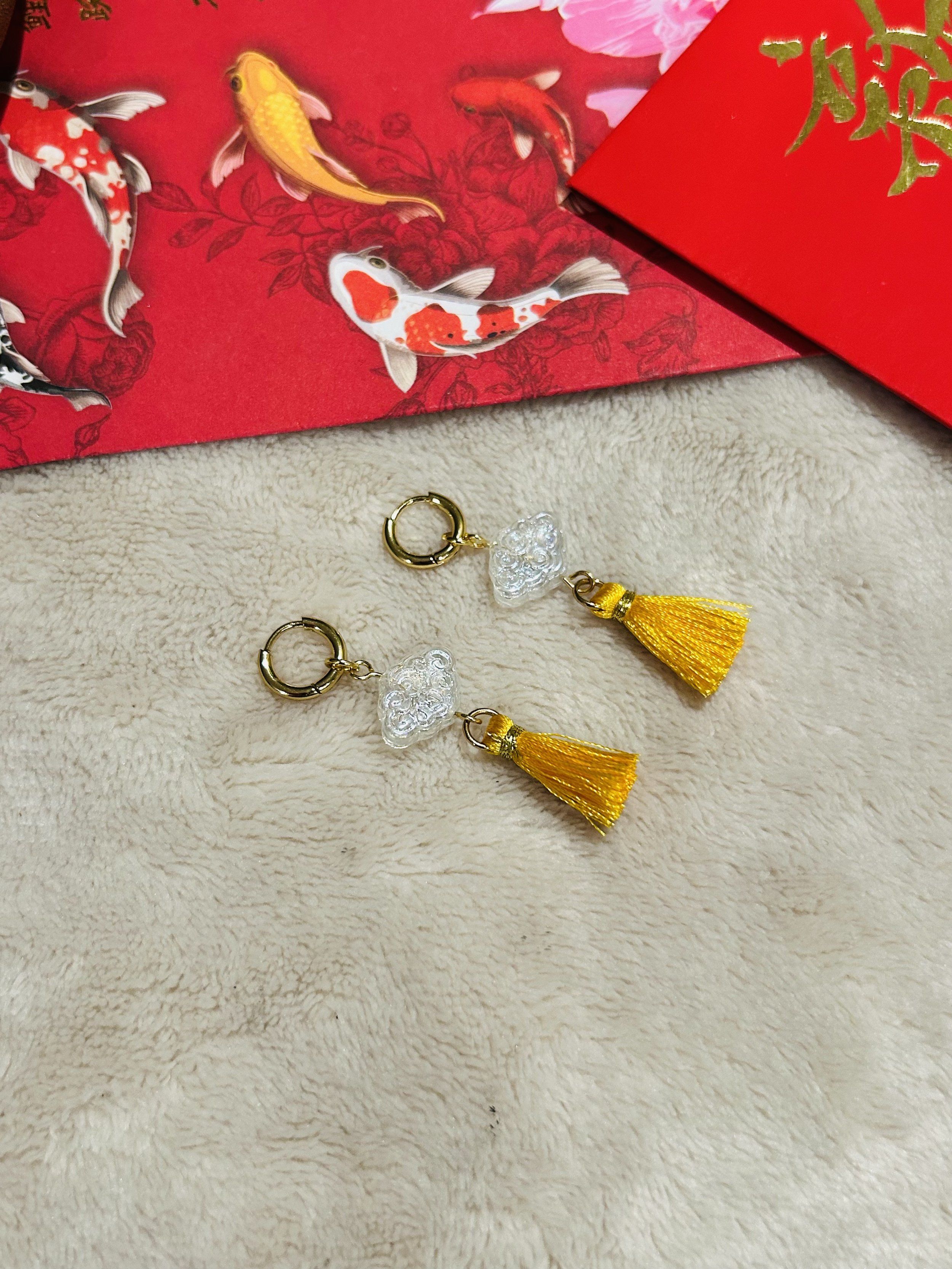Steam Bun + Lucky Cat
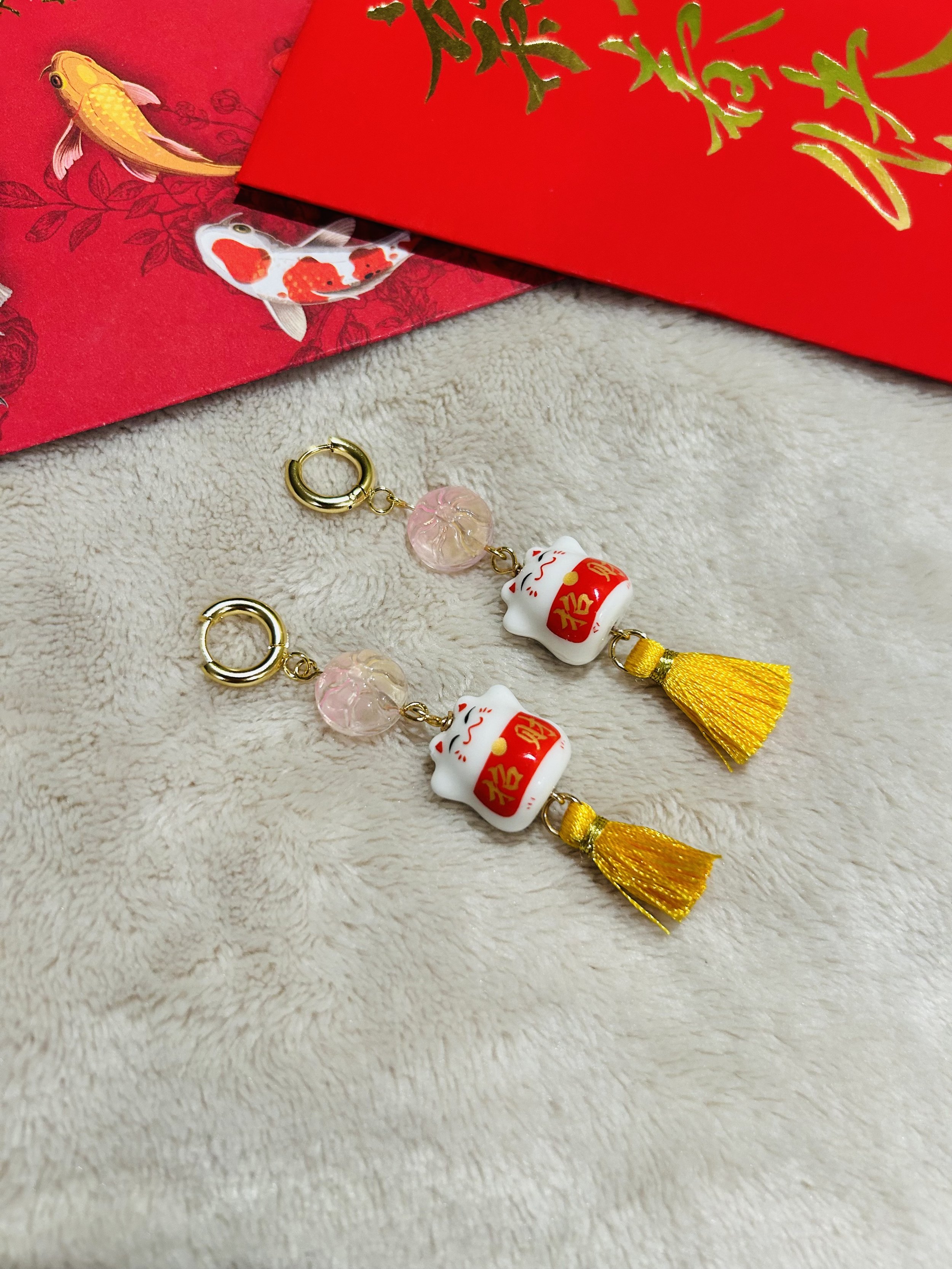
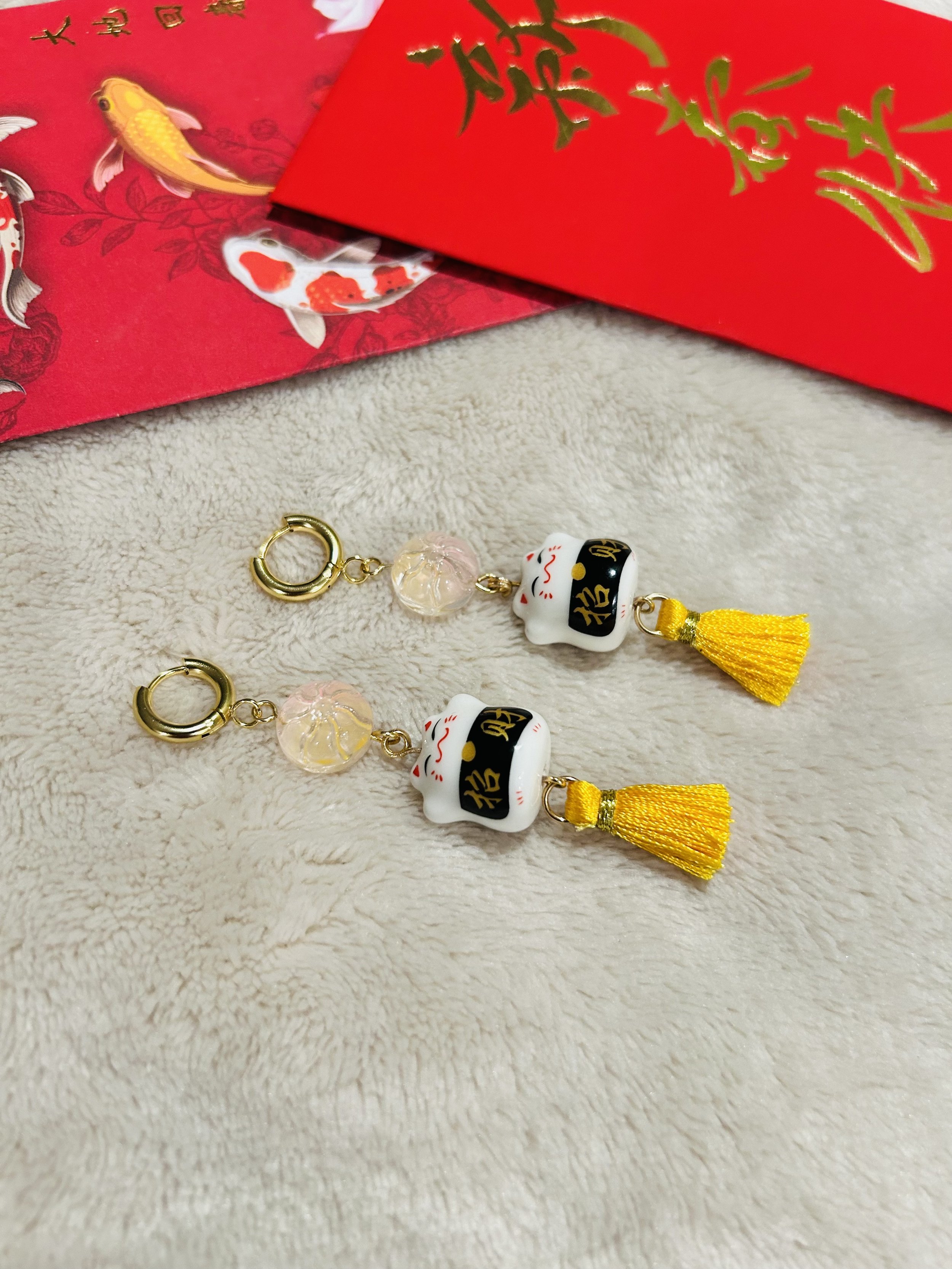
Steam Bun + Lucky Cat
Glass peach coloured steam bun and ceramic lucky cat with golden yellow tassel on 18k gold plated hardware and 24k gold plated huggie hoops.
Choice of cat with red scroll, or black scroll.
I hope that the steam bun reminds you to eat well and maintain a healthy and balanced gut, and the ceramic white lucky cat will bring you peace, harmony, and good fortune.
———
Some symbolism:
Steam buns (with filling), or bāozi (包子), have a few legend variations, but this one I think is most unique: In the 3rd century AD, a military strategist named Zhuge Liang and his army had to cross a river that was too strong (after defeating their opponents in battle). According to a barbarian lord, armies would sacrifice 50 men and then toss the heads into the river to please the river gods so that they may cross safely. However, Zhuge Liang wanted to avoid more human bloodshed. So he opted to sacrifice the livestock travelling with the army, and used the meat in buns shaped like human heads to toss into the river. These buns were later named mantou, which translates to “barbarian’s head” (maybe not the best term nowadays, but I guess it was the mid 200s).
Side note: mantou is another, perhaps older word for bāozi (filled buns), but mantou is now often referred to the steam buns without any filling.
Other sources say that steam buns and dumplings (both essentially food contained or wrapped in some kind of dough) were invented in ancient times as a way to feed sick soldiers and civilians to get better from illnesses, plague, hypothermia, etc. by eating this nutritious food that often had herbs and medicinal ingredients mixed in with the filling.
The lucky cat, or maneki-neko in Japanese, is often placed in a home or business to bring good luck and harmony. In China, cats were valued to be able to keep pests at bay, so having a cat around the house brought good fortune. The traditional white lucky cat is said to purify the energy in your home or business, creating a peaceful and harmonious environment. It can also be used in the home for those who want to signify a fresh start or new beginning.
In Japan, the lucky white cat is often depicted holding a coin in its left paw, representing wealth, and a traditional Japanese bell in its right paw, symbolizing good luck. This combination of symbols makes the lucky white cat a powerful talisman for wealth and good luck.
In feng shui - the southwest corner of your home or business is believed to be the most auspicious, an ideal place to place a lucky cat.
Gold-plated jewelry care:
To prolong the shine and longevity of your gold-plated jewelry, it’s recommended to avoid wearing when swimming (salt or chlorine water), showering, and sweating.
Cleaning your jewelry with a soft lint-free cloth every few months or once a year can help to keep its shine. (Note* Do not use a jewelry polishing cloth - these types of cloths are usually treated with a polishing agent and it can strip the gold plating, however, I highly recommend it if you have tarnishing 925 sterling silver jewelry!)
Warm water and dish soap can also be used to clean your gold-plated jewelry. Avoid anti-bacterial soaps.
Additionally, if you wear the jewelry regularly, your body oils actually help to keep the metal from tarnishing (this goes for sterling silver jewelry as well).
If you wear make up and perfume, try to apply this before putting your jewelry on - have your gold-plated jewelry be the last thing you put on before you leave, and the first thing you take off when you get home. The chemicals in perfumes and colognes can cause a reaction similar to oxidation and can potentially turn the gold plating black!
This information came from a helpful resource I found here !
